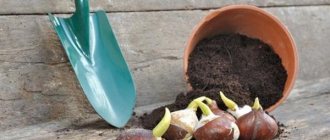What sub-zero temperatures can roses withstand? How many degrees of frost can unopened roses withstand?
Rose is a tender and amazing plant. It is a pleasure to care for this flower. He thanks for the long and abundant flowering - one rose bush can produce more than 20 flowers per season. But in regions with cold winters, roses need winter shelter.
what happens to roses when it gets cold
To obtain the decorative effect expected from roses, they must be carefully covered during the cold season. Without this, roses may die. Selected roses do not have the ability, like other perennial shrubs, to enter a dormant period in winter. They face the cold with new young shoots and flower buds. Frosts force the plant to enter a dormant period. But this state is in no way reminiscent of the hibernation of other shrubs. As soon as the temperature rises above zero, the rose immediately resumes sap flow and continues the growing season. This feature is the main reason for the death of roses in winter. Roses, in principle, can withstand frosts down to -6°C and even short-term drops in temperature to -12°C. But the juices in the plant freeze at a temperature of -3°C. They turn into ice, which tears the tissue of the shoots, forming microcracks in them. Old shoots, unlike young immature shoots, are not afraid of these cracks (frost holes) (that’s why young shoots of this year on roses must be pruned before wintering). But these cracks are a very vulnerable place for pathogenic bacteria to penetrate into the shoot. Once the temperature reaches zero, sap flow begins, bacteria are activated, penetrate the plant and infect it. Infection will not occur only if the roses are covered, the cover is dry and there are no temperature changes until spring, when the cover must be removed from the roses.
shelter of roses
for roses it is better to use an air-dry shelter. They begin to prepare roses for winter and cover them when the air temperatures are still positive and there are no night frosts. in the middle zone it is October. The shoots are freed from leaves, trimmed, and the climbing ones bend to the ground, but do not lie on it. Next, a shelter is made of wooden shields in the form of a hut over the rose bush. The top of the hut is covered with plastic film, and the ends remain open until November. In November, the ends are filled with plywood and a film is also placed on them. Snow and moisture should not get inside. The temperature in such a shelter, even in severe frosts, remains stable all winter around -8°C. Until spring, the bushes are frozen. And in the event of prolonged thaws, the ends of the shelter should be opened. If it is not possible to make a wooden shelter, you can build a wire frame for each bush and cover it with fiberglass that does not allow moisture to pass through. It is good to mulch the soil under the bushes in the shelter with leaves or spruce branches.
FROST-RESISTANT VARIETIES OF ROSE FLORIBUNDA
The main advantages of floribunda roses are their continuous flowering and winter hardiness. If there is a frame shelter, the floribunda will be able to winter at temperatures below 35 degrees. Rose Black Cherry is a winter-hardy rose that is extremely popular among gardeners. The rich dark red color of the buds gives the impression that there is a fire burning inside each rose. The bright yellow buds with a golden dusting of the Arthur Bell rose also perform well in winter. Blooms repeatedly and is resistant to powdery mildew. Without shelter it tolerates frosts down to -28C.
Freesia is deservedly considered one of the best floribunda roses. The rose has proven itself well in any landscape compositions and bouquets. Calmly tolerates winter cold under light shelter down to -35C. The sunny yellow petals of the Julia Child rose are weather and disease resistant. Without shelter they cope with frosts down to -28C. It is worth highlighting the Masquerade and Orange Sensation roses. They also performed very well. They tolerate frosts well, but with prolonged rains or too active sun, Orange Sensation loses its decorative effect.
Try planting these attractive varieties on your site. With proper care, these roses will delight you with long and lush blooms, despite the harsh winter months.
At what temperature should roses be opened after winter? Removing winter covers
Roses that are thoroughly covered for the winter open gradually in the spring.
- When positive daytime air temperatures are established, the top layer of roofing material or polyethylene film above the shelter should be slightly opened at the ends, leaving the breathable agrofibre insulation underneath in place. Without ventilation, roses are in danger of dying from damping off.
- As soon as the snow melts, the permanent frame shelter must be completely removed. The approximate date for the middle zone is the end of April, for the northern regions - the beginning of May. To prevent open roses from suffering from sunburn and sudden daily temperature changes, they should be covered in one layer of breathable agrofibre.
- After the end of the period of possible spring frosts, the roses are finally opened. In the middle zone this happens at the end of May, in the northern regions - in early June.
Capital winter shelters are gradually dismantled in the spring
If the roses overwintered under a light cover of coniferous spruce branches or other similar material, it is removed immediately after the snow melts, replacing it with agrofibre. Where spring frosts are very rare, a light shelter can be removed in one go: roses that have wintered under a thin layer of spruce branches emerge from the winter more hardened than those that were under a permanent frame air-dry shelter.
My neighbor covers her roses thoroughly, and comes to the site late, only on the May holidays, although our snow completely melts on April 20–25. Result: her roses annually suffer greatly from damping off; the most delicate and capricious varieties simply die after the first wintering. Moreover, under her shelter, even those hardy roses that I have overwintered simply under the snow without any additional insulation are damaged.
conclusions
There are frosts that do not require additional measures to protect roses. With them, you can not provide protection to roses or get by with the most minimal protective measures. This can be done when there are very mild frosts or fairly severe frosts that are short-term in nature.
In all other cases, plants need to be provided with good shelter, otherwise they may suffer. When providing shelter, you should be careful, because if you approach this issue incorrectly, you may encounter the problem of flowers rotting, which will lead to their death. In order to avoid all this, you must follow the rules described above. Then your favorite flowers will be safe every year, and winter will not be scary for them at all.
What frosts are not terrible for roses. What kind of frost can roses withstand?
Roses react differently to frost with the onset of winter and in spring, when the temperature regime changes almost instantly. The region in which the bushes are grown also plays a significant role.
Roses and winter frosts
The average temperatures that roses can withstand in winter without shelter are from -6 to -10 degrees. Most varieties tolerate short-term temperature drops to -15 without significant losses.
It is worth noting that different parts of the bush react differently to the first winter frosts - if -10 and even -12 degrees are not terrible for the ground part, then the root collar freezes already at -3.5 degrees.
For this reason, roses are always provided with minimal shelter, sprinkling the necks with dry peat, sand or garden soil. In regions with warm winters, when the temperature rarely drops below -3 degrees, the crop tolerates the cold well without shelter.
Wintering with shelter is recommended when the thermometer drops below -8-10 degrees. Complete freezing occurs at -30 - this mark is critical for most varieties.
When the specified temperature is reached, the juices in the shoots of the plant freeze, turning into ice and tearing the tissue. This leads to the formation of microcracks through which pathogenic bacteria subsequently penetrate.
What kind of frost can they withstand in the spring?
Spring frosts are dangerous for roses, which in some regions can occur in April. Roses without shelter can withstand low temperatures from -1 to -3 degrees - such a cold snap passes unnoticed for them and without harm.
The frost resistance of covered and hilled bushes is higher, since a protective layer of spruce branches or an air gap guarantees successful tolerance of low temperatures down to -7.
There is no need to rush to remove the shelter in the spring - it is advisable to wait until stable warmth has established.
Unprotected roses may suffer from severe and prolonged frosts from -7 degrees and below - not only the branches, but also the opened leaves and buds on the bushes will freeze.
Although this will not cause much harm to the plant, it will delay flowering, since the formation of buds will occur anew.
When to cover roses, taking into account the regional climate?
In order for roses to winter without loss, it is important to choose the right time to organize shelter. It should be cool enough for the bushes to slow down their vital activity - this will prevent active vegetation and subsequent damping off.
It is recommended to build a shelter for roses in the following periods for different regions:
- The middle zone and Moscow region - the first or second ten days of November. It is better to choose a dry, clear and windless day, when the temperature is within -5-7 degrees.
- Ural - end of October. Optimal conditions are considered to be a temperature of about -5 degrees and the presence of a layer of dry snow.
- Siberia – last days of October – beginning of November. The covering process begins when temperatures reach -5, and is completed after the soil freezes a couple of centimeters.
For the southern regions of Russia, simple hilling is sufficient - an earthen hill will protect the root collar from freezing. Since winters in this region are most often warm and humid, it is better to use covering materials under which the plantings will not dry out.
Consequences of improper shelter
- Roses do not have a period of pronounced dormancy, so if the shelter is carried out too early, the likelihood of developing mold and fungal diseases increases. More dangerous than frost is the increase in humidity when covering the flower garden early, when the plants may be subject to damping off and subsequent rotting. The winter shelter should be dry and well ventilated.
Late covering is fraught with freezing and death of plants. Young and/or hybrid roses with a weak root system need to be protected especially carefully. When temperatures are too low, the sap in the rose's stems freezes, forming ice that breaks the stems. Longitudinal cracks (frost cracks) filled with ice crystals appear.
- If a thaw begins in winter, the roses must be ventilated, otherwise consequences may appear, as with early sheltering of plants. After wintering, the plants are gradually freed from protective materials so that they have time to adapt to environmental conditions.
There is no ideal time to start covering roses, just as there is no ideal temperature or method of covering. How plants cope with winter cold depends on many factors. To minimize the risk of death of roses, it is necessary to properly prepare the plant for wintering , then in the spring it will begin to grow with renewed vigor and will delight you with beautiful flowers.
If you find an error, please select a piece of text and press Ctrl+Enter.
Roses at sub-zero temperatures. At what temperature to cover roses for the winter: tips and tricks
There is an opinion that roses are capricious plants. But this is not true at all. The rose requires care, fertilizing and watering no more often than its other flowerbed brother. It is important to properly cover these flowers for the winter so that the roots and stems are not too hot or cold.
Rose is not as sissy as she seems. After reading about what temperature to cover roses for the winter, many may be surprised. After all, not everyone knows that a bush with mature stems can easily withstand frost down to -8°C. Excessive overheating and humidity during wintering are much more dangerous for plants, because of which they can simply dry out. Therefore, it is important to know how to properly cover roses.
Firstly, you don’t need to be scared if it’s -1... -3° outside and the plants are not covered yet. Let them undergo hardening in this way.
Secondly, in order for the bushes to overwinter well, they are not fed in the fall and watering is stopped.
Thirdly, if prolonged rains are expected in October, then the ground under the bushes should be covered with thick cellophane. Then the plant will not be afraid of excess moisture during wintering.
Light cover for roses
They begin to insulate roses for the winter when the weather is at 0... -1°C. This is the temperature at which experienced flower growers recommend covering roses for the winter. Usually in the middle zone this corresponds to the beginning of November. But they should be bent to the ground before frost, at +2–+6°C, then the lashes are more pliable.
After theoretical knowledge about the temperature at which roses are covered has been obtained, they should be prepared for winter. First, all unripe shoots are cut out. Low varieties of plants (floribunda, hybrid tea, ground cover) can be pruned so that the stems rise 10-15 cm from the ground. Climbing roses are bent to the ground using arches, large hooks, and pins. It is better to lay the branches on spruce branches. To prevent diseases, the lashes are sprayed with a solution of copper sulfate in a ratio of 1:20 to water. Now you can add 5-7 cm of high-moor peat under the trunk and around it. Cover the plants with cellophane on top. They will remain in this form until mid-to-late November.
It is important to know at what temperature to cover roses for the winter if their seedlings are brought from warmer regions. For example, standard plants are covered a little earlier, without waiting for severe frosts to set in. Around the end of October, when the night temperature reaches +1... -1°C, insulation begins. A special cover made of spunbond, high-density lutrasil is placed on top of the plant. The cape should be well secured so that it is not blown away by the wind and the plant is warm. In order for standard roses to overwinter better, they should be very carefully bent to the ground and also secured with arches and pins.
Major shelter for roses
After frost has set in (around the end of November), a layer of spruce branches is placed on top of the plant, and then covered with roofing felt or roofing felt. This will help the roses to winter well and not be affected by rains and thaws, which can lead to their damping off.
Speaking about the temperature at which to cover roses for the winter, it should be summarized that the first light insulation of plants is carried out at 0... -2°C, and they are wrapped in a more global way when the temperature exceeds -5°C.
Ways to protect plants from frost
These plants love warmth very much and therefore they need to be provided with high-quality protection from the cold. There are many options for providing such protection, but two key groups can be distinguished:
- hilling and insulating roses using a layer of dry leaves, spruce branches, sawdust, and so on;
- hilling of roses and air-dry frame shelter.
Here are some useful tips to keep in mind when protecting your plants:
- It is worth preparing plants for winter in advance, this will allow the shoots to ripen well.
- When the second half of the summer season begins, it is worth moderating the frequency of watering, loosening the soil, and also reducing the amount of fertilizers containing nitrogen, because they will no longer be of much benefit, but they can cause harm.
- Materials for covering plants should also be prepared in advance and stored in a warm place until they are actually needed to protect the roses.
- When moderate frosts occur, it is necessary to pour a layer of sand at the base of the bush and hill the bush with earth for shelter (to a height of 10 to 40 cm, depending on the growth of the bush). Important! This should be done without fail, since otherwise frost will greatly damage the shoot tissue.
- When the top of the soil freezes significantly, you will need to completely cover the roses. Important! In addition, it is worth treating the bush with a 3% solution of iron sulfate, this will avoid various pests and the development of diseases for the bush. If this is not done, then the risk of developing the disease is extremely high.
- Shrub type roses must be pruned before covering. Important! The shoots must remain at least 30 cm long. In addition, you need to ensure that there are no immature shoots and their leaves left. All these elements must be removed and burned.
- To protect roses, it is best to cover their spruce branches (it protects against many diseases and repels mice, which can also damage the plant) and top it with insulating material.
- It is recommended that the stems of the bush be carefully tied together with a synthetic cord and bent to the ground before prolonged frosts set in. This avoids cracking of the plant bark. Important! Do not use cords that absorb moisture, as they can cause various plant diseases.
Shelter for climbing and semi-climbing roses
Without shelter, such roses run the risk of being damaged in the fall, so to protect them you need to do the following:
- remove the stem part from the support. Important! If there are a lot of stems (more than 12), then it is necessary to remove all shoots that are more than three years old. They are already old and rather burden the bush than bring it anything positive;
- tie the shoots to each other and lay them on the base of the bush (it should be hilled up and covered with spruce branches) or bend them to the side and fix them in an inclined position at an angle, and stick wooden stakes into the ground. Important! All this work must be carried out extremely carefully so as not to harm the bush.
After this, roses of this type will definitely survive any frost without any problems.
Covering standard roses without leaves
To protect this type of rose, you must do the following:
- untie the plant from the support type peg;
- dig in some earth from the part where the trunk will be tilted, tilt it slightly and bend it to the ground;
- perform fixation with stakes, staples and spears;
- cover the stem part with spruce branches and fix it with a cord;
- Sprinkle the bush and crown with earth.
By doing all this work carefully, you will provide your roses with good protection from all the cold that awaits them in the winter.
Air-dry shelter
This is a special type of shelter in which specialized frames (of metal or wood type, others are not recommended to be used, as they are not reliable enough, and in some cases can lead to and to various diseases). A covering type material is stretched over them and then a polyethylene film is placed, which provides a high level of protection.
This type of shelter is very good because it creates a favorable microclimate for plants in winter and protects the bushes not only from a wide variety of cold weather, but also from high humidity.
Important! However, it is worth considering that this shelter option can lead to damping off of plants if condensation accumulates in damp areas under such shelter. This will quickly destroy the flowers. In this situation, it is better to prefer shelter with hilling and subsequent covering with a layer of insulating materials, since it is safer for roses.
Wintering roses. How to preserve rose seedlings in winter? Personal experience
Roses. How to preserve in winter.
I usually don’t practice holding roses in the winter, but several times I still had to keep roses in the basement until spring. And this experience was successful.
In late autumn, a neighbor in her summer cottage was sorting out her gorgeous rose garden - she trimmed, covered and offered me the excess rose bushes. I don’t know for what reasons she formed them, but she happily agreed. There was no strength to refuse the gifts, and who would refuse such a gift? It didn’t bother me that it was just before winter. Most importantly, there was a place to store the roses. No problems were foreseen.
Viya / Myproplants.com
A neighbor helped me prepare the bushes correctly. Together we carefully examined the roots, removing rotten and damaged areas. The sections were disinfected. Without such treatment, it is difficult to preserve plants - there is a high risk of damage by pathogenic bacteria and fungal diseases.
Before this, while still growing, the neighbor also completely treated the bushes with fungicides to protect them from infection. Depending on the age and type of rose, I trimmed the shoots to the required size and removed all the leaves.
Next, I found a spacious plastic bucket from under some kind of construction mixture and placed the donated roses there. The roots in buckets were covered with loose and fertilized greenhouse soil. In this form, now I lowered my roses into the basement.
Champlain
Bright red and semi-double roses of this variety, bred in Canada, develop 5-7 pieces on clusters. You can admire them before the first frost. Small foliage, thorny branches, resistance to temperatures down to -35°C and a tendency to develop powdery mildew in high humidity are the main features of this species.
To propagate this bush, it is quite difficult to obtain cuttings, because the short plants are almost completely covered with buds. It is best to plant roses in sunny areas. Before the start of winter, the greens are hilled up, and fertilizing is done in spring and summer.
Misconception 1: All roses should be trimmed short before covering.
You can often come across advice that absolutely all roses should be cut to a height of 20-30 cm in preparation for wintering. Do not rush to do this. First, determine which garden group your rose belongs to.
Such short pruning for the winter is indicated only for hybrid tea roses and representatives of the floribunda group. If you prune climbers, groundcovers and scrubs the same way, they will grow slowly next year and risk not blooming.
If you do not remember what type and variety was indicated on the packaging of the seedling, or if you find it difficult to determine which group your plant belongs to, it is better not to prune the rose, just in case. Just remove all the leaves and buds in the fall and bend the shoots to the ground before covering.
In addition, for the winter it is not recommended to prune thin shoots that grew on the bush in the warm autumn. With the onset of frost they will die, but in the spring they are shortened and thereby awaken the buds located on the lower part of the plant. It is from them that the most powerful shoots will grow, producing large flowers.











